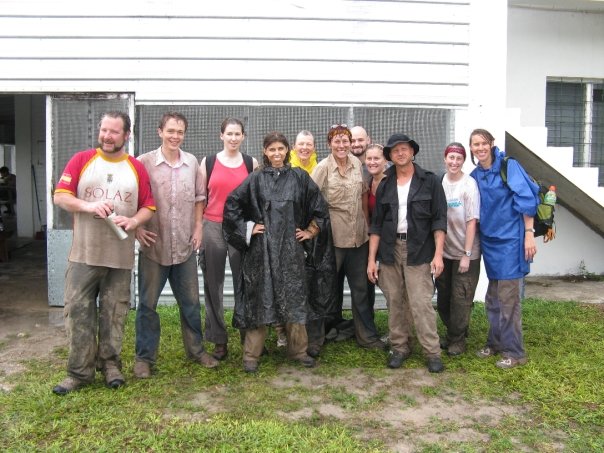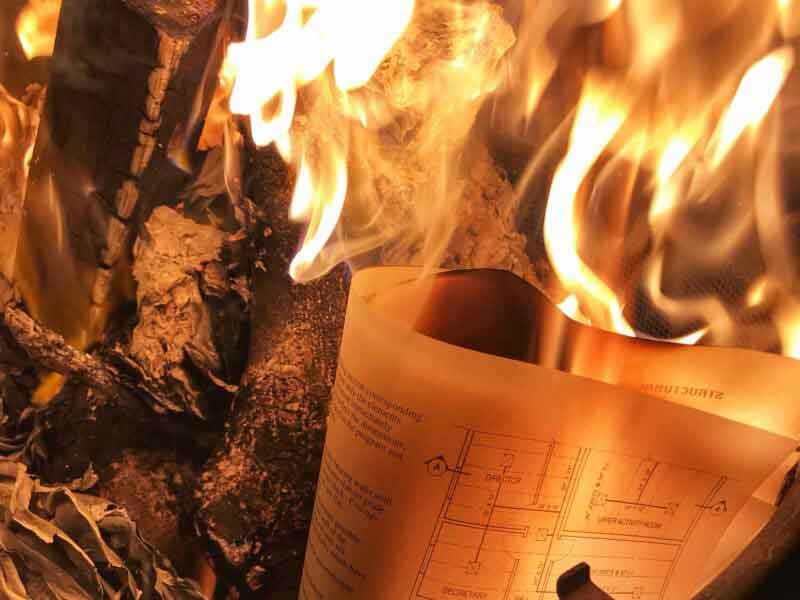Every so often the world falls apart. These cycles hit architects hard and you will experience many over your career. While our profession always comes back, graduating into a low point is especially disheartening. You are not the first to face it, though. If those of us who emerged into the 2008 recession can offer any hope it is this: we survived; we made it into the profession; and, despite our handicap of being millennials (i), we are finally in a position to contribute some helpful advice.
Most importantly, and no matter the economic situation, life will not go as planned. Sorry.

We all thought it would. Clear path: architecture school – internship – exams – architect. All in 10 years or less. We even had reason to believe for a while. In 2007, firms wanted anyone who could breathe – actually, if you could save time and produce more work by not breathing, they wouldn’t complain. Two years later, recent hires and entry-level employees were among the first laid off and those completing their studies had little hope of finding anything. Less than 1% of our graduate program walked the stage with a job offer in the profession. A few found internships in the coming months – many of which didn’t last through the end of the year. (ii)
Depending on their location, it took about another 2 years for firms to really start recovering and hiring. Future downturns could require the same, more, or less time. However long it takes, it could be longer than you can afford without pay and a bigger hole than you want in your resume. While waiting, though, you can build general employed adult skills (iii) in almost any job and, when architecture firms are not hiring, it turns out that you are allowed to seek other employment.
It is a tough mental shift, but it does not mean a permanent exit from the profession. If you can find something adjacent (iv) to architecture, you can even develop additional skills which will set you apart from the next crop of graduates. Architects have to fill many roles at once. Having abilities beyond drafting and faking design reasoning on the spot will make you more valuable to firms and make your eventual transition into project and/or firm management easier.

We ’09 Master of Architecture graduates went out excavating and documenting historic sites, volunteering with churches, working for contractors, hiring out as photographers, and whatever other roles it took to get by. Within a year, one third of the class had official architectural internships. Within two, around 60%. We did have a few people move in other directions as their lives and interests developed, but surprisingly few considering our prospects upon graduation. (v) Ten years later, roughly 40% of our class are licensed architects and at least 75% have found work in the profession in some capacity.

As to how we eventually found these coveted positions, every story varies. The best general advice, though, is to develop relationships with people because a disturbing amount in life gets accomplished through networks. (vi)
Cold calls and internet postings can lead to employment as well, so there is hope for those who feel they have no connections – although you probably have more than you realize. However, investing the time to get to know people and involve yourself in causes will be more than worth it if you plan to build a lifelong career. Just remember that you need to maintain these relationships once created: stay in touch with your professors and classmates, reconnect with the colleagues you met during that summer internship (vii), and join local professional organizations. (viii) When the project prospects improve, employers may be willing to take a chance on people they already know sooner than they will a disembodied resume.

Despite the current closed doors, those of us already working in architecture do actually want the new graduates to enter and thrive in the profession. (ix) You may not find a job in architecture immediately and your life may look very different than you expected. Fortunately, though, you are finally “real people” (x) and, since the world is not entirely ending yet, the future holds the potential for many more disappointment to come. Our profession always comes back and none of us will ever get to retire so we have plenty of years in which to achieve our goals. Keep looking, get to know more people, and do what you can to prepare for when projects pick up and firms start hiring. Past classes have survived and so will you.
FOOTNOTES
i AKA: “the bane of civilization.”
ii This is not an exhaustive research study. All figures are based on self-reported information shared by 2009 Texas A&M Master of Architecture graduates on LinkedIn and similar platforms.
iii Give it a few years, look back at the most recent group of graduates, and you will understand.
iv “Adjacent” stretches a very long way. Marketing, business management, tech support…they could all count.
v When looking at both undergrad and grad classmates, those who never pursued a Master of Architecture showed a much higher rate of leaving the profession. Not unexpected, but something to consider. As a side note, those
who left have not expressed public regret about their decisions – happiness may, in fact, exist outside architecture.
vi Yes, it can contribute to the ‘old boys club’ problems, but it is not entirely illogical. Regarding employment specifically, firms entrust their reputation to employees which makes hiring strangers a risk. The higher the responsibility prospects of the position, the greater the risk they take. This is why employers ask for references and why they will give more weight to the word of a reference they know personally than one they do not. It can also lead to filling positions before they are even advertised.
vii Not just to ask for a job. Mentorship, camaraderie, and expertise on specific topics are among the many
great reasons for knowing people in and around the profession.
viii AIA offers 18 months of free membership to recent graduates. Sign up, go to the local chapter’s meetings/events, and, most importantly, volunteer on the committees! That is where you will get to know people.
ix And not just because we don’t want to bind our own sets of drawings and need you to teach us the new software.
x As declared by the Dean at one of our ceremonies, it is apparently graduation which finally confers this honour. Welcome to the club! Failure to pay your dues will affect your credit score.
written by Pamela da Graça, AIA


